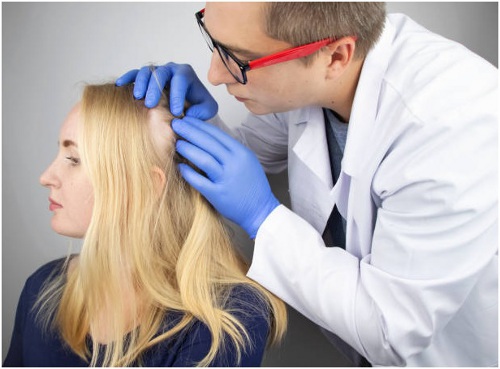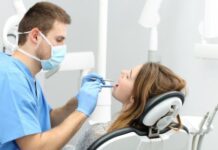Alopecia areata is an autoimmune condition that causes mild to severe hair loss. Although it is known to occur both in men and women, females are more likely to have this condition. The reason for this is still unknown up to this day. Aside from the scalp, hair loss can occur on the eyebrows and lashes.
Currently, there is no permanent cure for alopecia areata. Doctors prescribe some forms of treatment like topical creams and ointments to make hair regrowth faster.


Choosing the best treatment for alopecia areata will depend on the severity of the hair loss, age, and current medical condition. Since there is no universal cure, a treatment plan may vary from one individual to another.
Overview and Diagnosis of Alopecia Areata
The most common form of alopecia appears as small round or oval patches of baldness on the scalp. The bald area looks smooth and normal and may occasionally be itchy, tender, or cause a burning sensation.
Affected people may also have abnormalities on the surface of their fingernails which appear as tiny pits or dents, grooves, or superficial splitting. Once a person observes these symptoms on the scalp or other parts of the body, an initial examination should be done by a dermatologist.
They will inspect the hairless patch and the patient’s nails. They might also look at the degree of hair loss and examine the patient’s hair from the affected area under a microscope to check for any structural abnormalities.
Sometimes, other tests such as skin biopsy may be required to ensure that alopecia areata is the main cause of hair loss. Blood tests will also be done to check for other diseases related to the immune system.
Because the symptoms of alopecia areata are visually distinct and straightforward, doctors can diagnose it quickly and proceed to lay out the necessary treatment.
Most Effective Treatment Options for Alopecia Areata
While small patches are expected to regrow hair within 6 to 12 months, there is still a high chance that the area will lose hair again. Many treatment options can reduce the amount of hair fall or hasten the hair growth process. There is currently no proven method to prevent alopecia areata.
The best treatment for alopecia areata may come in the form of injections, topical creams, ointments, or oral drugs. Some of the most effective treatment methods are listed below:
- Intralesional Steroid Injections – This is a very common method of treatment for mild and localized alopecia areata. They are administered by a dermatologist for three to six months. The main advantage of this treatment is how fast the results appear, which is typically four weeks after the first injection. However, these injections do not prevent hair loss from occurring again.
- Topical Minoxidil – This is often used for mild alopecia areata. Typically, this solution is applied one or two times a day on the hairless patch to stimulate hair regrowth. It is often combined with other topical corticosteroid medications to achieve the best results.
- Anthralin – This medication can come in the form of creams or ointments. It is commonly applied to the affected area at least once a day and then rinsed off after one or several hours, depending on the indication. Some common side effects of using this cream include skin irritation brownish discoloration of the applied area, which often wears off over time.
- Oral Corticosteroids – For more extensive cases of alopecia areata, corticosteroid pills like prednisone can be taken to stimulate hair growth. However, patients should watch out for temporary side effects, including weight gain, metabolic abnormalities, acne, and menstrual problems in women. They are also not commonly prescribed because of the possible health risks associated with long-term use.
- Topical Immunotherapy – This treatment, also termed contact immunotherapy, is used to treat more serious cases of alopecia, such as alopecia totalis and alopecia universalis. It involves applying certain chemicals directly to the scalp in order to cause an allergic reaction known to divert the immune response and promote health regrowth in the area. The effects of topical immunotherapy usually appear after six months of treatment. To maintain hair regrowth, patients must extend their treatment plan.
Self-Care Tips for People Struggling with Alopecia Areata
Having alopecia areata can affect many aspects of one’s life. These helpful tips can help in their recovery:
- Protect affected areas from the cold by wearing hats and scarves.
- Protect your eyes if you lose eyebrows or eyelashes by wearing false eyelashes or eyeglasses.
- Apply sunscreen on your scalp to reduce getting sunburn or skin cancer.
- Avoid getting stressed out by doing meditation or yoga.
Conclusion
There is no permanent cure for alopecia areata, although certain treatment methods can reduce the frequency of hair fall and promote faster hair growth. Choosing the right treatment for this condition will always depend on the findings of a dermatologist.

























